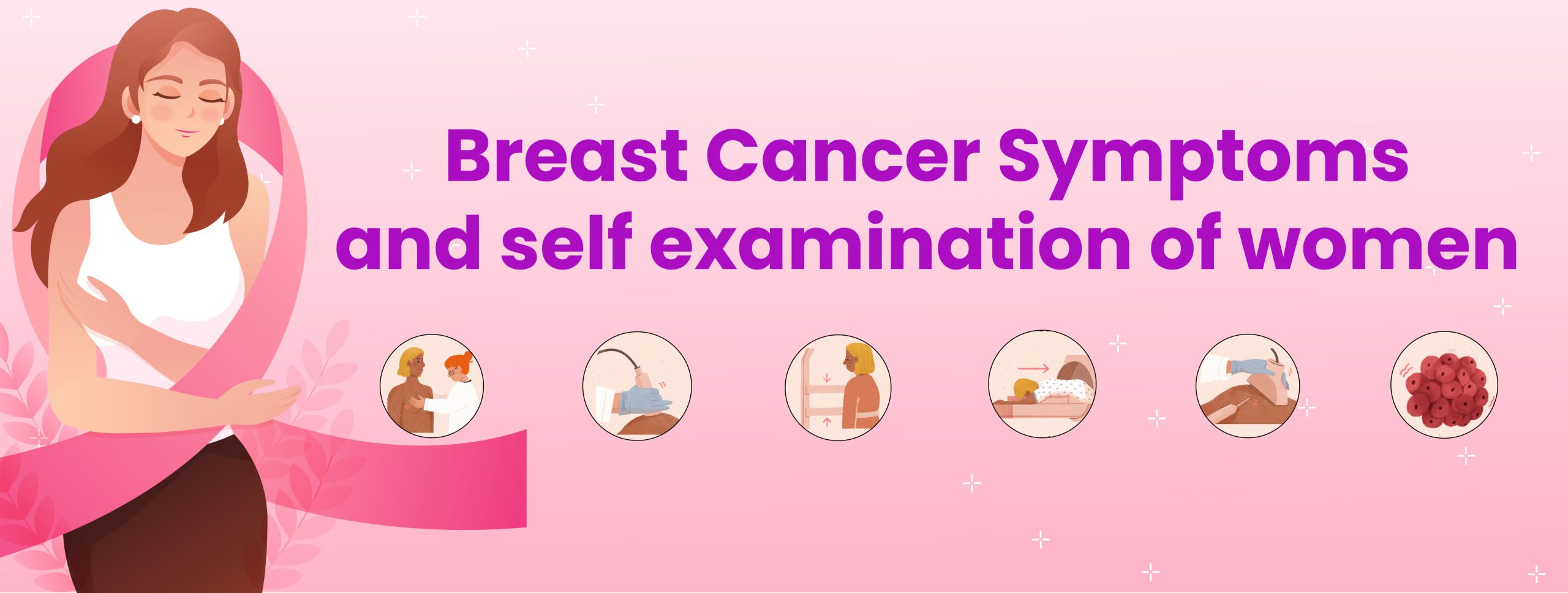Steps of Breast Self-Examination:
Importance and Steps of Breast Self-Examination for Cancer
Breast Cancer ranks number one in Indian female cancer cases. Therefore, every woman should know how to check for breast cancer at home. Awareness regarding the steps of breast self-examination, therefore, becomes crucial. Breast cancer self-examination combines easy steps and can be done easily at home
Importance of Breast Self-Examination (BSE)
Breast Self-Examination involves inspection of the breasts yourself so that you become familiar with the breast and get a feel of your breast. Then, when you know what is normal for you, you will be able to find if there are any changes like lumps or any discharge from the nipple easily and seek early medical help underlining the importance of breast self-examination.
The breast becomes lumpy and painful just before periods. So the best time to do BSE is one week after periods. However, for ladies who have stopped menstruating, it is better to fix a particular day in every month to do BSE, like the first or the last day of the month.
Hence, a breast cancer examination by yourself at home followed by a cancer checkup for your breasts will keep you away from mishaps.
When to do it? How to check your breasts for lumps at home?
- Dressing or undressing at night
- Lying in bed during the morning or at bedtime
- Taking a shower
Steps of Breast Self-Examination
- With the dress removed, stand in front of a mirror. Put both arms by the side. Compare both breasts and look for any changes in the skin, nipple, size, and shape of the breast.

- Next, raise the arms above the head and again see for the same things.

- Put both hands on the hips and press firmly to flex the chest muscles and again see for the same things in both breasts.

- After this, palpate both breasts with the pads of the middle three fingers.


- If the breast is large, doing the BSE lying down position is better. After seeing and comparing both breasts in the mirror, lie down. To see for the right breast, place the right hand behind the head and vice versa. Then, using the pads of the middle three fingers, press all parts of the breast in a circular way, starting from the nipple and moving outwards to cover all breast parts.

- Squeeze the nipple and see for any discharge. See the armpit also. Do the same on the left side also.

- If you find any lumps or swellings, stay calm. Note down your findings and see for any changes in the next month.
Most self-examination findings are not signs of cancer. But you should seek medical help if you notice any,
- Change in the look, feel, or size of the breast
- Change in the look or feel of the nipple
- Dimpling of the skin
- Any hard lumps
- Nipple discharge
- Nipple or other area pulling inwards
- Rash on the nipple
- Any swelling or lump in the axilla.
With each BSE, you will become more familiar with your breast so that if there are any changes, you can notice them early and seek medical help. So try to incorporate the steps of SBE into your routine.
Check Up for Breast Cancer
After self-examination, contact a doctor immediately if you discover any abnormality with your breasts. It’s the best way to early detection and early cure of breast cancer.
Vydehi Cancer Center is a specialized center equipped with advanced technologies. The oncologists at VCC are well-versed in all the modern treatment methodologies and believe in an integrated approach to care. For example, a Virtual Tumor Board involves experts from the medicine, surgery, and radiation fields and then deciding on the best treatment procedure for each patient.
Vydehi group of institutions includes Vydehi Superspeciality Hospital for expert cancer treatment and care with a specialized focus on emergency and trauma care.
Frequently Asked Questions
- How many steps are there in breast self-examination?
Ans: Breast self-examination consists of three to five basic steps. At first, stand in front of the mirror and then compare both breasts. Next, form a padding with the three middle fingers. Finally, palpate the breasts, covering them entirely with the padding, and move in a clockwise direction. The same method can be used while lying down in case of large breast size. If you feel a lump or an unwanted leakage from the nipples, consult a cancer specialist immediately.
- What are the three methods to perform a breast self-examination?
Ans: Checking your breasts for lumps can be done using the circular method, the wheel spokes method, and the grid method. All three methods require the padding formed by your three middle fingers and palpating the breasts, searching for any abnormality if present.
- Where is breast self-examination done?
Ans: Breast self-examination can be done at home while dressing, undressing, at bedtime, or showering. It can be performed at your home. It has to be performed by standing in front of the mirror or lying down in case of breasts of large size.

